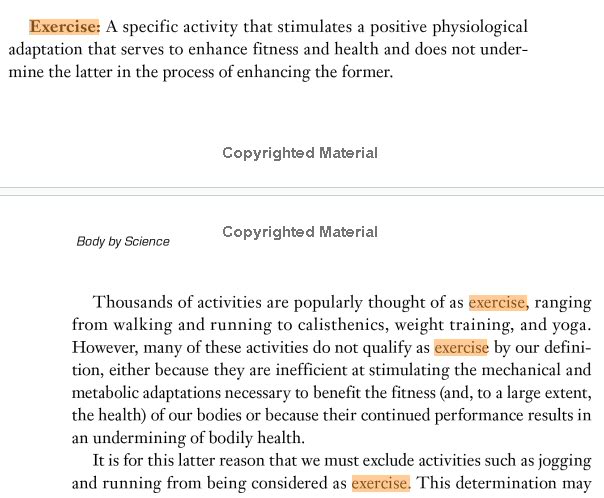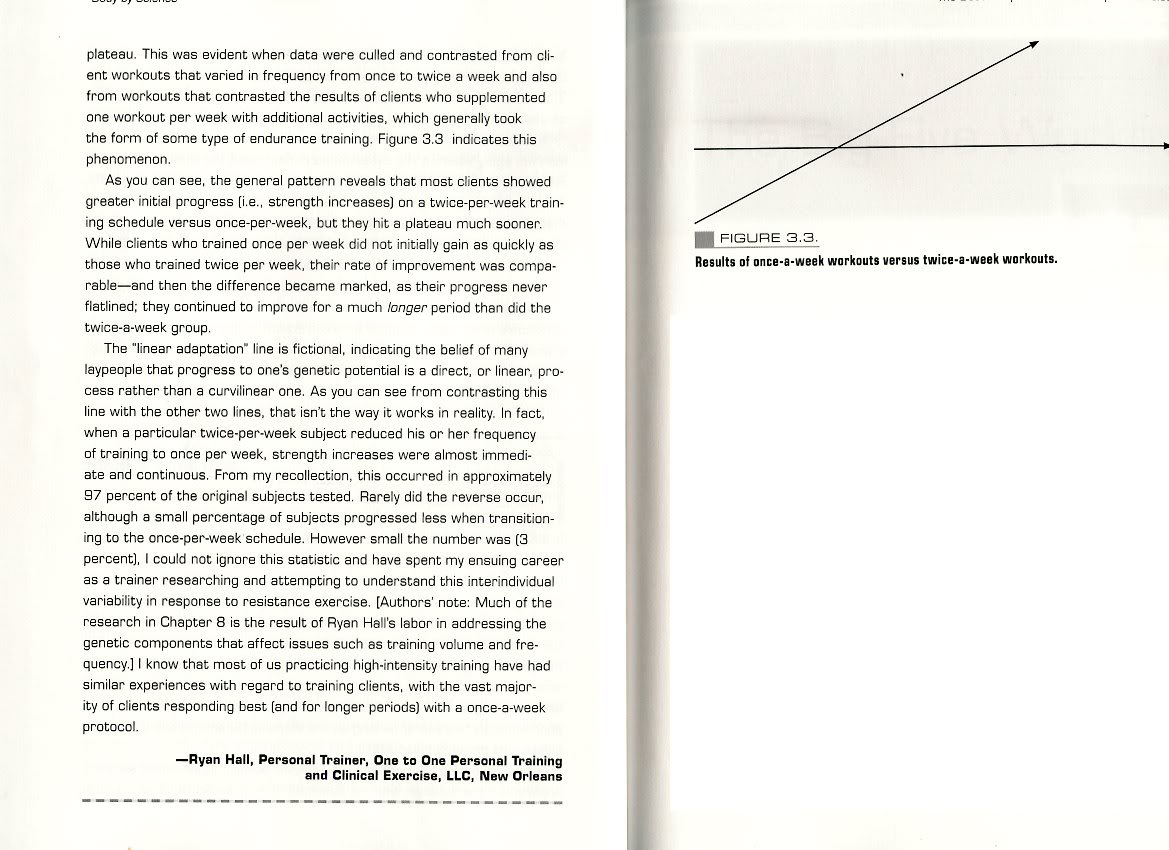HFWR said:I'm using a new program called LIIFT: low-intensity, infrequent training.
Working like a charm...
Sounds like my evening routine of arm curls with a one pound weight that gets slightly lighter with each rep.
HFWR said:I'm using a new program called LIIFT: low-intensity, infrequent training.
Working like a charm...
That's called a pyramid.Sounds like my evening routine of arm curls with a one pound weight that gets slightly lighter with each rep.
haha said:That's called a pyramid.
Ha



I share a lot of your concerns. I feel like the super slow HIT lifting is working better than my thrice weekly more extensive but far less intense lifting. But -- and it is a big but -- I just can't buy the idea than some sort of endurance exercise is not needed in addition to that. I also found the lack of clear discussion about the impact of endurance exercises frustrating. I guess that is some of the lazy critical thinking you mentioned. So, I will stick with the HIT once a week lifting and stick with my frequent 25-30 mile bike rides. If I view those rides as YNY's "exercising hard" (maybe a stretch?) I guess I am compromising between BBS and YNY---------------------
Having said that, the research they cite certainly suggests that short once-per-week, slow, intensive weight training might be the best way to exercise. Perhaps, like Don, I'm just attracted to something that will eliminate those "Oh no, I have to exercise this afternoon!" moments.
I like the idea of designing the lifts so that all the different muscle fibers are recruited. I can see how that's the best way to promote cardiovascular health, and I can understand how long, low intensity work leaves many muscle fibers dormant.
I'm not sure I could make myself go through with the superslow lifts, however, since I've found them to be so unpleasant. The authors pretty much say that you can't get full benefit without someone to exhort you to work harder, and without well-designed Nautilus machines.
Many of you have talked about a compromise between BBS and YNY -- doing some walking or biking in addition to the once/week lifting. I'm not sure a compromise is possible. According to BBS, if you don't rest, you will benefit less from the lifting. OTOH, they only cite studies that say that lifting more than once per week is inefficient. They say nothing explicitly about doing other exercises during the rest period. That is, there are no studies that show that walking prevents the healing/resting time.
My current plan is to try this system and see how it goes, but I'll probably still do other exercises during the week.
I am a great believer in doing what works for you that you enjoy, and paying attention to the responses of one's body when working out. If I enjoy a particular workout regimen, and it is giving me the results I want, then there is no reason to change that I can think of.
The key question is: needed for what? I haven't looked at the book, but reading on the web site, and here, I get the idea that all the BBS folks are interested in is strength. One of the web site articles overtly equates getting/staying young with increasing/maintaining strength. They mention health occasionally, but really don't seem interested in that. I think it is a very well established result that endurance/aerobic exercise is required for maintaining health, and if BBS doesn't care about health, it's not surprising that they don't recommend that type of exercise.But -- and it is a big but -- I just can't buy the idea than some sort of endurance exercise is not needed in addition to that.
I quit chocolate about midway into this and lost about 10 pounds as a result -- is that a two pack I'm seeing?
I find the arguments pretty compelling. One problem is that I'm not impressed with the authors.
I wonder how many books get published because it's easier & more profitable than submitting research papers to peer-review boards.Al, the problems you point out with the authors' thinking processes would have bothered me a lot too. It sure doesn't show me the kind of intelligence, education or training, and careful thought that I would hope to see in a book of this type.
As much as I'm happy to see sugar-free chocolate, why haven't manufacturers jumped on this?You can still have chocolate, but without the sugar:
As much as I'm happy to see sugar-free chocolate, why haven't manufacturers jumped on this?

I guess I shoulda seen that one coming...... which is great but expensive.
I am not sure that these research reports are exactly on point WRT the books you are discussing, but they do suggest science based guidelines for strength training.
Weight Training With Effort - Many Ways
Ha
Here's a summary:
Doing some more overthinking on this issue: If you need to have a week between sessions because healing is necessary, what about stretching? If the healing consists of repair of micro-injuries to muscle fibers, you could argue that stretching could be the worst thing to do between sessions.

Going to failure is an interesting thing. Our strongest athletes like NFL players and Olympic lifters and power lifters mostly do not train to failure. And for me anyway, failure is kind of subjective, depending at least to some extent on one's pain tolerance.The thing that BBS and the above have in common is the idea that maximum effort is the most important thing. BBS says that you should lift very slowly, and go to failure, whereas the other says is that the only important thing is that your last rep be very difficult.
One thing I like about this type of workout, just getting started, is that I don't have to walk around with a clip board keeping track of weights, reps, and sets. Just put on a good bit of weight, and move it until I can't anymore. Last thing I need is another thing to keep books on.
